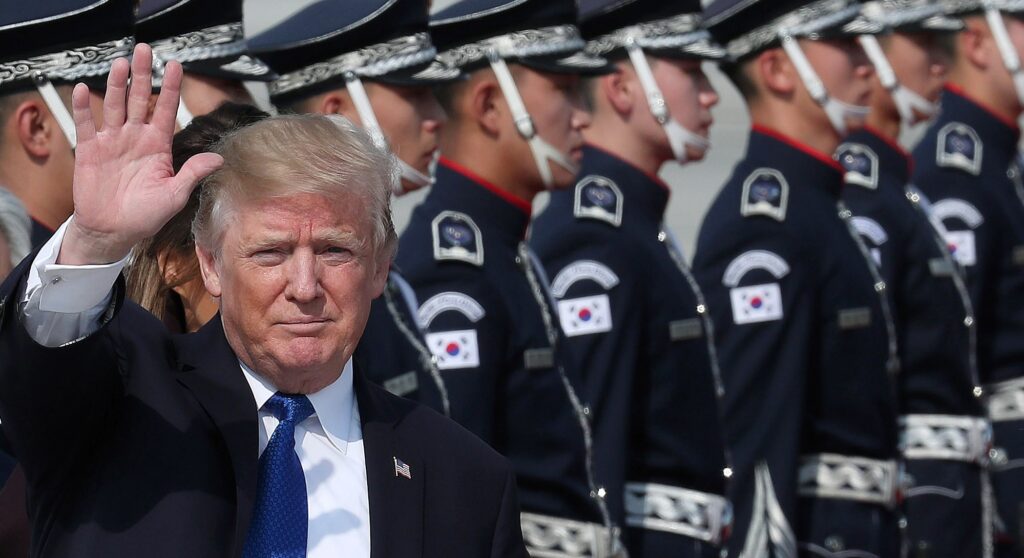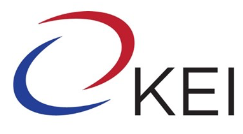The Peninsula
New Leadership, New Priorities for the U.S.–South Korea Alliance

U.S. President Donald Trump has taken a radical approach in his efforts to transform the global economic and security order to align with the rhetoric of his first administration. In the meantime, South Korea has been embroiled in domestic political paralysis and a difficult power transition to progressive leadership in the aftermath of Yoon Suk Yeol’s misguided declaration of martial law in December 2024. The Lee Jae Myung administration has thus far embraced continuity on foreign policy issues, despite Lee’s rhetoric during the campaign trail. In Trump’s Oval Office, when politically progressive leaders of allied countries challenge Trump, fireworks ensue. But South Korea could turn out to be an exception.
A primary reason to expect cooperation rather than fireworks between Trump and Lee is that Lee worked overtime during his presidential campaign to bring his policy positions into alignment with Trump’s preferences. Lee’s move to the center was motivated in part by steady South Korean public opinion in favor of the United States and skeptical of China. Lee signaled his support for the U.S.-South Korea alliance and for cooperative relations between South Korea and Japan in interviews with foreign media in March, despite having regularly criticized Yoon in previous years for being too solicitous of the United States and too willing to overlook historical issues with Japan. Lee’s newly appointed Minister of Foreign Affairs Cho Hyun stopped first in Japan before visiting the United States as part of his first overseas trip, and Lee will meet with Japan’s prime minister en route to his first meeting with Trump.
A second signal of Lee’s support for continuity in relations with the United States is his decision to promote seasoned pro-U.S. individuals over pro-China individuals to senior positions in his new administration. The U.S.-South Korea summit announcement stated that the two leaders would “discuss ways to develop the Korea-U.S. alliance into a future-oriented, comprehensive strategic alliance”—language that mirrors the rhetoric used by the conservative Yoon administration. The main task for Trump and Lee is whether both sides can find ways to “modernize the alliance in a mutually beneficial manner,” a priority the Trump administration has already begun to discuss with South Korea in response to changes in the regional security environment.
Further evidence of Lee’s pragmatism is the early efforts by his new cabinet to reach a bilateral agreement with the Trump administration on a new tariff framework. A distinctive aspect of the tariff framework has been South Korea’s pledge to support USD 150 billion in technologies and investments to “Make American Shipbuilding Great Again,” a clear signal of Lee’s willingness to center the country’s trade and investments around its partnership with the United States.
Early discussions between Trump and Lee will likely focus around the issue of “modernizing the alliance,” including pledges of increasing South Korea’s defense spending levels, strategic flexibility for U.S. Forces Korea (USFK) to pursue off-peninsula missions and expand its role to deter both North Korea and China, and rebalancing defense cost-sharing between the two countries in the context of a more comprehensive defense partnership.
Most notable in this regard is that the Lee administration appears to be more open to discussing regional security under the alliance modernization framework than the Yoon administration—senior officials under the Yoon administration routinely deflected comments about South Korea’s role in a Taiwan contingency. It remains an open question whether Lee’s views will evolve from his controversial campaign statement that South Korea should say “thank you” to China and stay out of a cross-strait conflict. But the recent public acknowledgement by Foreign Minister Cho Hyun that aspects of China’s maritime behavior are “problematic” suggests that Lee’s administration will be open to coordinating with the Trump administration on policies toward China.
On the other hand, North Korea is an issue on which Trump and Lee may already be in close alignment. Lee has already dismantled loudspeakers along the demilitarized zone, made major cutbacks to radio transmissions of South Korean broadcasts targeting the North, and signaled his administration’s interest in renewing inter-Korean dialogue. Kim Jong Un’s sister, Kim Yo Jong, initially responded with hostility to inter-Korean contact but acknowledged that her brother’s relationship with Trump is “not bad.” Both Trump and Lee may agree on the desirability of engaging with Kim, despite the North’s clear expressions of disinterest in denuclearization.
Most significant to alliance dynamics under Trump and Lee is that Lee shows no inclination to challenge Trump. Although the two leaders come from opposite ends of the political spectrum, they share a number of things in common. They are both leaders who have survived assassination attempts at campaign rallies, and both may regard themselves as having been persecuted by political rivals and as predestined for a national leadership role.
Trump has acknowledged Lee as South Korea’s elected leader despite efforts by both MAGA supporters and some Korean conservatives to lure Trump into weighing in on the political crisis that resulted in Lee’s election as president. If the two leaders are able to stabilize the U.S.-South Korea relationship, the primary challenge may be whether both Trump and Lee can abandon “America First” and “Korea first” instincts to “Make the Alliance Great Again.”
This article originally appeared on and has been reposted with permission from Korea on Point.
Scott Snyder is President and CEO of the Korea Economic Institute of America. The views expressed here are the author’s alone.
Photo from the Republic of Korea Flickr account.
KEI is registered under the FARA as an agent of the Korea Institute for International Economic Policy, a public corporation established by the government of the Republic of Korea. Additional information is available at the Department of Justice, Washington, D.C.
